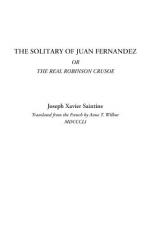While he examines it, he sees with surprise all sorts of birds come to peck at it; coatis, agoutis, and even rats, come out of their holes, boldly carrying away before his eyes fragments, whence issues a thick and brown sap. Emboldened by their example, and especially by the balsamic odor of the plant, he tastes it. It is sweet and succulent.
This plant is no other than that providential vegetable called by the Spaniards porro, and which forms so large a part of the nourishment of the poor inhabitants of Chili.[1]
[Footnote 1: It is the Durvilloea utilis, dedicated to Dumont d’Urville, by Bory de St. Vincent, and classed by him in the laminariees, an important and valuable family of marine cryptogamia.]
The sea, which had already sent Selkirk seals to furnish him with oil and furs in a moment of distress, had just come to his assistance by giving him an easily procured aliment for a long time.
Another surprise awaits him.
Between the interlaced branches of his alga, he discovers a little bottle, strongly secured with a cork and wax. It contains a fragment of parchment, on which are traced some lines in the Spanish language.
Although he is but imperfectly acquainted with this language, though the characters are partially effaced or scarcely legible, Selkirk, by dint of patience and study, soon deciphers the following words:
’In the name of the Holy Trinity, to you who may read’—(here some words were wanting,)—’greeting. My name is Jean Gons—(Gonzalve or Gonsales; the rest of the name was illegible.) After having seen my two sons, and almost all my fortune, swallowed up in the sea with the vessel Fernand Cortes, in which I was a passenger, thrown by shipwreck on the coasts of the Island of San Ambrosio, near Chili, I live here alone and desolate. May God and men come to my aid!’
At the bottom of the parchment, some other characters were perceptible, but without form, without connection, and almost entirely destroyed by a slight mould which had collected at the bottom of the bottle.
CHAPTER XI.
The Island San Ambrosio.—Selkirk at last knows what Friendship is.—The Raft.—Visits to the Tomb of Marimonda.—The Departure.—The two Islands.—Shipwreck.—The Port of Safety.
As he read this, Selkirk was seized with intense pity for the unfortunate shipwrecked. What! on this same ocean, undoubtedly on these same shores, lives another unhappy being, like himself exiled from the world, enduring the same sufferings, subject to the same wants, experiencing the same ennui, the same anguish as himself! this man has confided to the sea his cry of distress, his complaint, and the sea, a faithful messenger, has just deposited it at the feet of Selkirk!
Suddenly he remembers that rock, that island, discerned by him, on the day when at the Oasis, he was reconciled to Marimonda.




